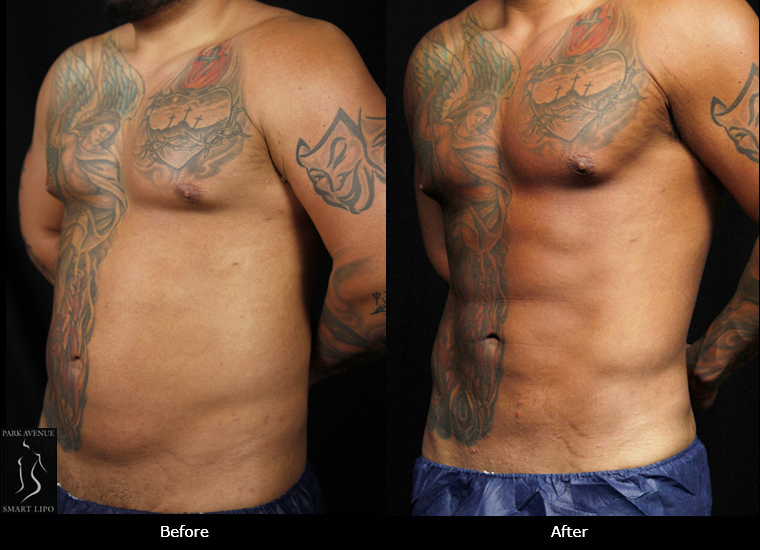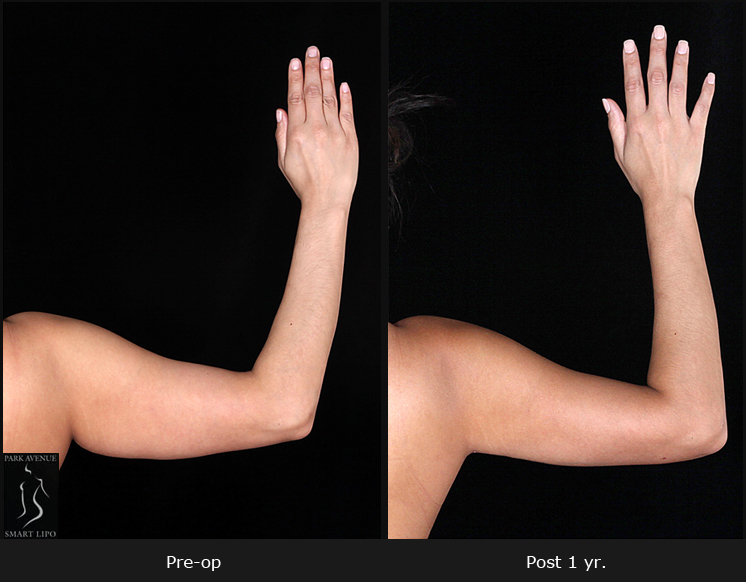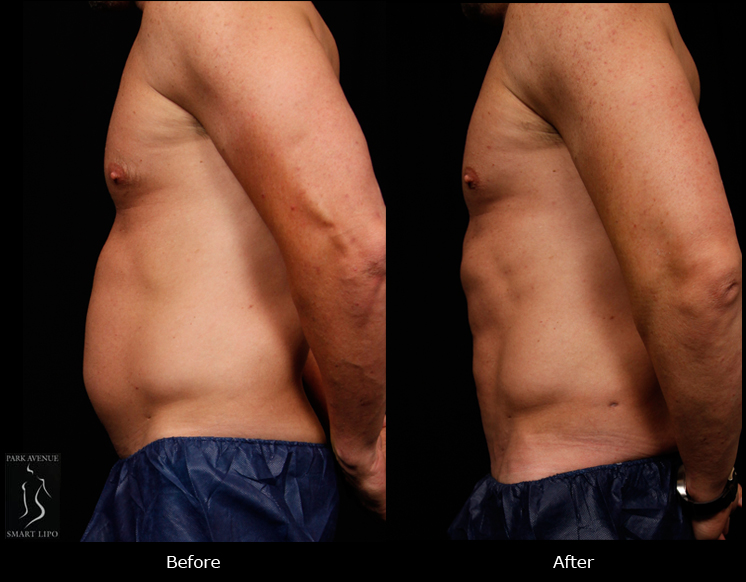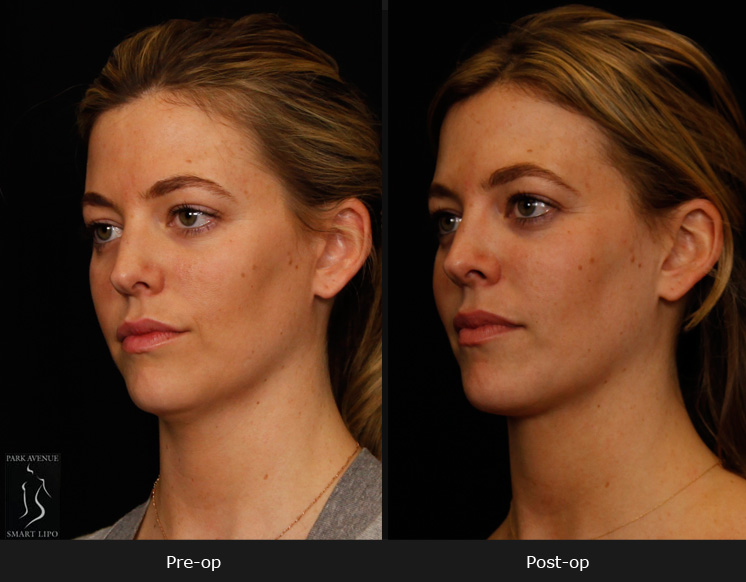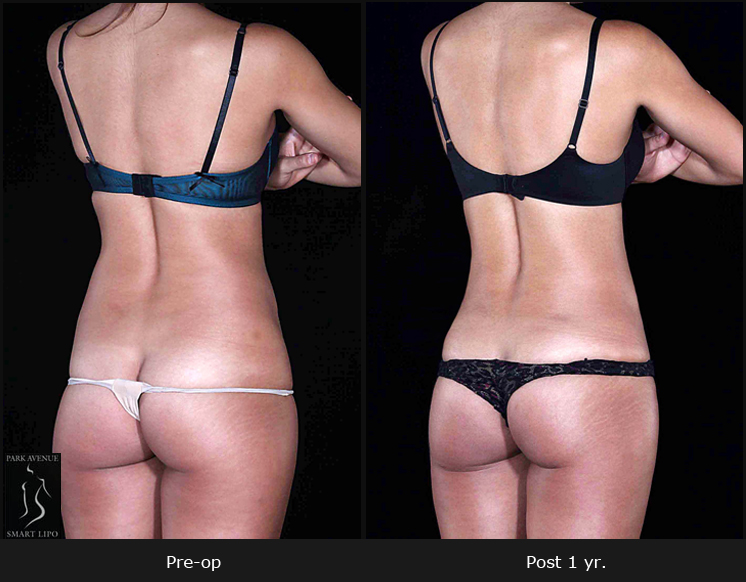The hips are a major problem area for most women. Fat tends to accumulate easily around the hips due to factors such as weight gain, hormonal changes, lack of exercise and aging, and has a negative impact on the overall body contour. Even rigorous exercise and diets cannot address “love handles” – as these areas of excess fat and skin are called – which is why many women seek liposuction. Leading plastic surgery facilities provide hip laser liposuction in NYC using Smartlipo Triplex technology, which minimizes downtime and side effects.
Laser liposuction surgery in New York City is a safe and effective way to remove excess fat and improve body contour and symmetry. The advanced Smartlipo workstation blends the power of three laser wavelengths – 1064 nm, 1320 nm and 1440 nm – to liquefy fat so that it can be easily removed. By allowing the surgeon to precisely target the treatment site, this technology minimizes damage to surrounding tissues. Its intelligent delivery systems – ThermaGuide, SmartSense and ThermaView – are designed to regulate energy delivery and prevent over treatment. Smartlipo treatment can be performed on an outpatient basis under local anesthesia and comes with a much shorter recovery time than traditional liposuction surgery.
The healing process after hip laser liposuction surgery will vary based on personal considerations. Many people who have this procedure are unaware about the significance of proper post-operative care. It is possible to speed up the recovery process if the patient plans ahead, takes extra care, and follows the surgeon’s instructions diligently. These measures can make recovery smoother and quicker:
- Wear the compression garment as advised for the first two weeks post-op. This will support the surgical site, help circulation and skin shrinkage, and ease swelling.
- Refrain from taking blood thinning drugs or medications.
- Taking the pain medications as instructed by your surgeon will ease any pain or discomfort after the procedure.
- Have someone drive you home after the surgery. Avoid driving for first 24 hours after surgery or if you are taking pain medications.
- Avoid making major decisions or participating in activities that require judgment for 24 hours after surgery.
- Light walking is recommended to promote good blood flow and prevent blood clots from developing.
- Don’t perform strenuous activities such as running or aerobics for six weeks. You can resume your activities slowly by starting with low intensity, lower body exercise.
- Most patients return to work and low impact activities after 48 hours of rest and recovery. But if you are working in an office setting which requires you to do jobs in sitting position, it is advisable to take one or two more days off from your work for recovery.
- Having assistance at home during the immediate post-op period would help with meals, hygiene, and potential emergencies.
- Do not apply ice-packs or a heating pad to the treated areas.
- Avoid swimming or taking shower during the full duration of your recovery as soaking the treated area(s) can increase the risk of infection and slow down the body’s healing processes. Keeping your incisions dry and clean is critical to reduce the risk of infection.
- Take adequate rest and sleep on your stomach till the time advised by your surgeon.
- If done appropriately, post-op massage can help increase circulation, relax the muscles, reduce pain, swelling, and inflammation, and promote correct healing.
- Quit smoking and alcohol consumption before and two weeks after surgery as it can impair the healing and increase the risk of complication.
- Drink adequate amounts of water and fresh juice to prevent dehydration.
- Stick to a healthy diet. Speedy healing requires proper nutrition. Maintain a well-balanced diet and limit consumption of salts, sugars, and saturated fats. Include foods such as salmon, berries, and green tea which are full of healthy vitamins and antioxidants, and can speed recovery.
- Contact your surgeon immediately if you notice anything unusual, such as any signs of infection.
When the swelling has subsided, typically in about one month, successful hip liposuction will result in slim and shapely hips. Recovery time can vary depending on the amount of fat removed, with some patients recovering quickly over a week and taking up to three months for pain and discomfort to improve or resolve with more extensive liposuction.
If you are considering laser liposuction surgery in New York City to get rid of excess fat around the hips, make sure that you approach an experienced surgeon. A reliable surgeon will first conduct a comprehensive physical exam and evaluation to determine if you are an ideal candidate for the procedure. Once you are cleared, the surgeon will evaluate your concerns and goals to provide customized treatment. Skilled liposuction surgeons who are experts in hip procedures understand the need for adjusting fat removal to provide attractive outcomes. Maintaining a healthy diet and exercising regularly will help you retain your slimmer shape.

